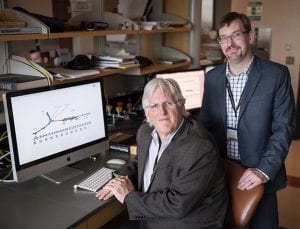Ira Pastor, ideaXme exponential health ambassador and founder of Bioquark, interviews Dr. William Pruett, from the Physiology and Biophysics Department of the University of Mississippi Medical Center.

Ira Pastor comments:
The year is now 2019, and we have surpassed $7 trillion in total annual healthcare expenditures around the globe. As part of that $7 trillion, we’re now spending close to $1 trillion a year on pharmaceutical products.
As we’ve been watching the traditional pharma product basket change over the last century, form small organic molecules drugs and vaccines, to larger macromolecule biologics (proteins and antibodies), and now into an era of gene and cell therapies, and other therapeutic modalities, the tools that allow these discoveries and development of these novel interventions have been changing as well.
A set of tools that we have been hearing quite a bit about (and that we have discussed a bit on the show) in recent years is the triad of artificial intelligence, machine learning and deep learning and their respective applications in the drug discovery and development processes.
In-Silico
And a term we have heard a lot mentioned alongside these tools is that of “In-Silico” – an expression meaning “performed on computer” or “via computer simulation” in reference to different biological experiments.
We’ve talked about a few of these applications on past shows, in terms of using some of these tools to better guide the rational drug design process, or more appropriately select patients for a clinical trial, via personalized medicine.
But we have yet to address the “800-pound gorilla” in the room, and that is that even after you have your “perfect” drug candidate and your “perfect” inclusion / exclusion criteria, traditional clinical trials still cost billions of dollars and take many years of hard work, with no guarantee that your new drug will make it through the complexity that is represented by the human body, with its 30 trillion cells, its endless array of heterogenic micro-environments, wide range of gene expression, and so forth.
But what if this wasn’t the case in the future? What if it was possible to conduct “In-Silico” clinical trials on virtual bodies that could perfectly mimic human physiology?
Dr. William Pruett

Today we are joined by Dr. William Pruett, from the Physiology and Biophysics Department, of the University of Mississippi Medical Center.
With a Doctorate in Mathematics from Baylor University, Dr. Pruett has been merging his skills from Mathematics (including expertise in representation theory, geometry, combinatorics, numerical analysis and algorithms) with an in-depth understanding of cardiovascular, renal, and endocrine physiology.
Dr. Pruett’s research interests include the use of physiological modeling to generate hypotheses and to understand integrative physiological mechanisms that are not observable in either whole animal or human experiments.
For almost 50 years, his department has been developing computer simulations of integrative physiology for both research and educational purposes.
HumMod
The current model, HumMod, is comprised of 14 organ systems, and includes neural, endocrine, circulatory, and renal physiology.
HumMod provides a top-down model of human physiology from whole organs to individual molecules. It features more than 1,500 equations and 6,500 variables such as body fluids, circulation, electrolytes, hormones, metabolism, and skin temperature.
HumMod aims to simulate how human physiology works, and is currently the most sophisticated mathematical model of human physiology ever created.
On this show we will hear from Dr. Pruett:
How he became interested in mathematics, physiology, and in merging the two together. An overview of Hummod and how it works. Hummod’s use in understanding renal physiology and pathophysiology of hypertension. Other therapeutic indications he and his partners are working on. Finally, his future visions of In-Silico clinical trials.

Credits: Ira Pastor interview video, text, and audio.
Follow Ira Pastor on Twitter: @IraSamuelPastor
If you liked this interview, be sure to check out our interview on the cutting edge of digital health innovation!
Follow ideaXme on Twitter: @ideaxm
On Instagram: @ideaxme
On YouTube: ideaxme
Find ideaXme across the internet including on iTunes, SoundCloud, Radio Public, TuneIn Radio, I Heart Radio, Google Podcasts, Spotify and more.
ideaXme is a global podcast, ambassador and mentor programme. Our mission: Move the human story forward!™ ideaXme Ltd.

Pingback: Astrobiology and the Search for Extraterrestrial-Like Life - ideaXme
Pingback: Biotechnology and the Study of Human Sexuality - ideaXme